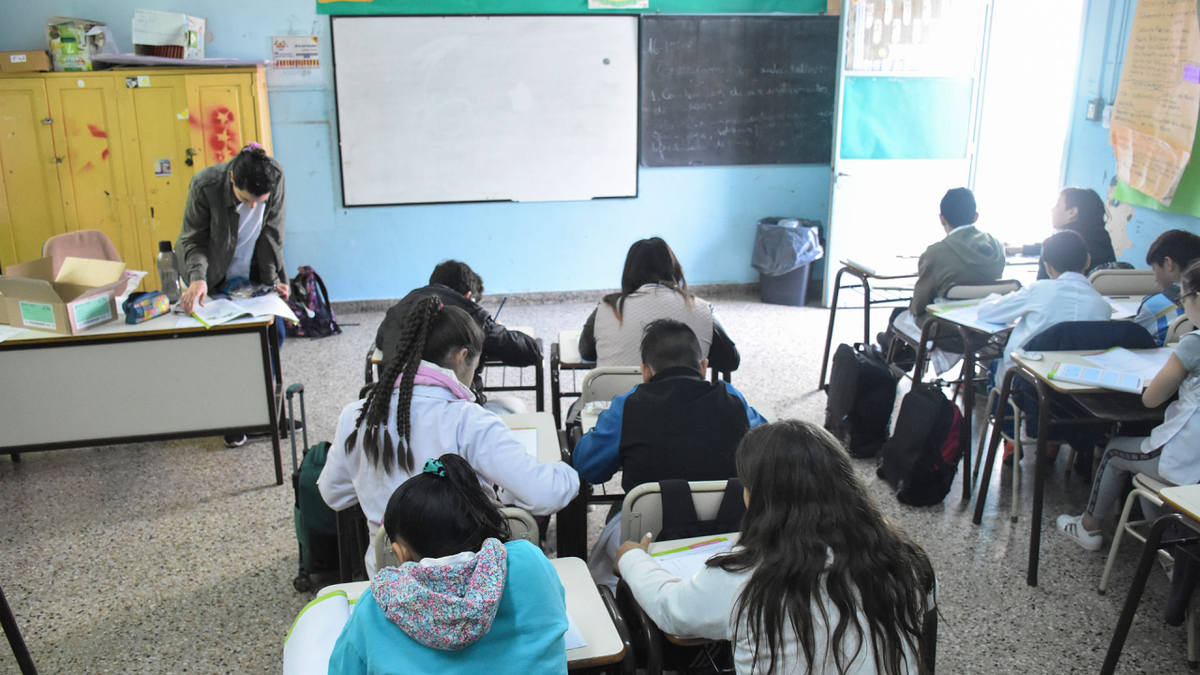A recent report prepared from the results of the tests Learn warned about content learning problems. On the one hand, in the primary level Almost half of the students fail to reach the minimum levels of knowledge. Furthermore, eight out of 10 students secondary It does not reach basic knowledge in Mathematics, obtaining the worst grades in the national evaluation in education.
The findings emerge from the work “What did we learn from Learning?” prepared jointly by the Argentine Observatory for Education and Educate 2050authored by Alejandro Ganimian and Verónica Mesalles.
In the work published this Thursday, the experts made a precise diagnosis based on the data collected on the performance of primary (3rd, 4th and 6th grade) and secondary (2nd/3rd year and 5th grade) students. /6th year, depending on the jurisdiction) of the 24 districts of the country (23 provinces plus the City of Buenos Aires).
Learn Tests: bad grade for minimum learning levels
The report analyzed several issues based on data emerging from the tests Learnbetween 2016 and 2023. The diagnosis of the state of education in terms of learning is worrying, since the percentage of students in the lowest levels of results increased in almost all subjects and grades/years since 2016, except in language 5th/6th year.
In all subjects and grades, the growth of students who fail to achieve minimum knowledge in subjects such as Language, Mathematics, Social Sciences and Natural Sciences was observed.
minimum learning levels primary learning.jpg
Percentage of students at the lowest levels of performance, by primary grade, subject and type of evaluation (national or regional). Source: “What did we learn from Learning?”, from Argentinos por la Educación and Educar 2050.
For example, in 6th grade, between three and five in 10 students perform at or below the basic level, depending on the subject. The situation is more worrying in Mathematics, where it was recorded that half of the students do not exceed these expected levels of learning.
“Operation Learn has had several achievements, including achieving predictability of the subjects and grades to be evaluated each year. To improve its usefulness as a decision tool, it is important to improve some technical aspects, such as its coverage and comparability over time. Even with these points pending, the little progress in its quality and equity results should worry us,” said Alejandro Ganimian, an expert in educational statistics (Harvard School of Education/New York University).
If we look at the numbers of secondary school students, the proportion that does not achieve minimum learning is even higher. There it was seen that at the 5th/6th grade level, between four and eight out of every 10 students perform at or below the basic level, depending on the subject. In Mathematics, again, the situation is critical: eight out of 10 perform at the two lowest levels of the test Learn.
Percentage of students in the lowest levels secondary mathematics.jpg

Percentage of students in the lowest levels in census mathematics assessments, 5th/6th year of secondary school, 2016-2022. Data: Learn. Source: “What did we learn from Learning?”, from Argentinos por la Educación and Educar 2050.
The worrying situation was also reflected in international tests regarding the level of learning of Argentine students. On Latin American assessments, about half of 3rd graders and between four and eight in 10 6th graders perform at the lowest levels.
Meanwhile, in international tests, between five and seven out of every 10 2nd and 3rd year students do not reach minimum performance standards. Surprisingly, according to the published report, both figures exceed the percentages of students in the lowest levels of the Learn tests.
The level of excellence in education, with the least percentage
The negative diagnosis is reinforced by the low number of students who achieve excellent learning, a group that is reduced to between one and three out of every 10 students who manage to access the advanced level, except in 5th/6th grade Mathematics. year of secondary school, where almost half of Argentine jurisdictions do not have students who classify at this level.
Another example is that the percentage of students at the highest level of the test is decreasing. In all subjects and grades/years, except 5th/6th language, the percentage of students who achieve advanced level learning on the test is lower in 2023 (for primary school) and 2022 (for secondary school) compared to 2016.
The socioeconomic issue, another factor that aggravates the situation
In a country with more than half of its inhabitants living in poverty, this is another factor that always generates hard and crude data in relation to school performance.
If we take socioeconomic level into account, the gap between the percentage of poorest and richest students at the advanced level is the widest of all, but it is narrowing.
graph 2 socioeconomic level learning.jpg

Difference in the percentage of students at the lowest levels in language census assessments, by socioeconomic level and grade/year. Data: Learn. Source: “What did we learn from Learning?”, from Argentinos por la Educación and Educar 2050.
In this analysis item of the survey, the gap by socioeconomic level of the students is the most extreme, between 17 and 40 points, but it was reduced in most subjects and grades/years.
The poorest students are much more likely to perform at the lower levels of the test than the wealthiest students in all subjects and grades/years.
The percentage of poorest students with low performance increased in Language and Mathematics, except in 5th/6th grade Language.
Source: Ambito
I am an author and journalist who has worked in the entertainment industry for over a decade. I currently work as a news editor at a major news website, and my focus is on covering the latest trends in entertainment. I also write occasional pieces for other outlets, and have authored two books about the entertainment industry.




